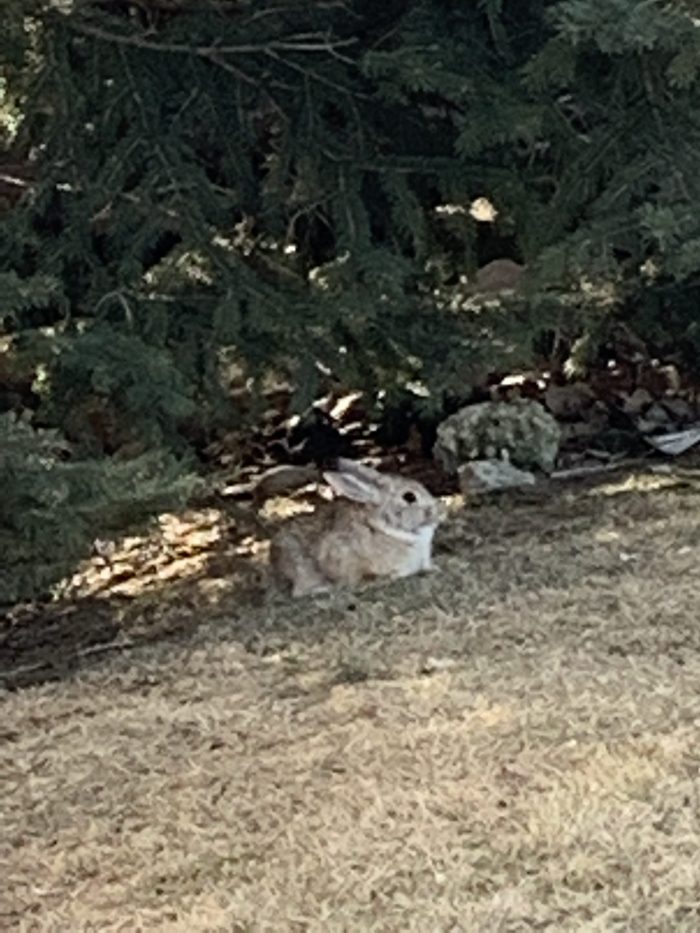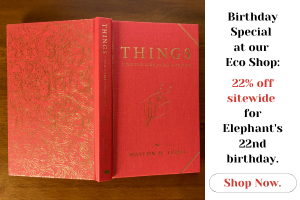Do Bunnies like Ravioli?
Once there was a tall pointy pink house on a hill. There was a big wise tree by the house. In the house, there were three apartments. There was an apartment on the first floor, and one on the second floor, and one in the attic.
In the attic, a mom, Loulou, lived with her three children and a dog named Roosevelt. Here oldest, a girl, was named Lala, Here second oldest, the middle child, a boy, was named Lele. And then here was little Ham. Ham was the smallest. He wanted to be like his dad—big and tough—but he didn’t know his dad. He had a poster on his wall of his favorite baseball player—a guy who was a pitcher *and* hit big high fast home runs—and Ham liked to pretend that the baseball player was his dad.
One Monday morning, he and his brother Lele and his sister Lala and his mother Loulou ate big cheesey yellow omelettes and toast with lots of jam. Lele spread the butter carefully on the toast and then Ham put way too much jam on it. When he was all full and happy and finished and he’d helped with the dishes, Ham got his backpack and unlocked his bike.
He waited for his best friend, Elizabeth, at the bottom of the big hill beneath the pointy pink house beneath the wise tree. They biked together every day. She was his best friend. She always wore funny old dresses or overalls or jeans. She had big silly curly red hair. She rolled up on her silver bike. Then they biked to school together. Out of the blue, today, she asked “Why is your name Ham?”
“My name is Hamilton,” Ham explained. “But also I like ham. It’s yummy.”
Elisabeth’s eyes got big. “Ham is a pig!”
“What do you mean?”
“Ham is a pig!”
“So?”
Ham didn’t know what she meant. She was always silly but this made no sense. They got to school, which was a green school on the next hill over, and after reading class where they read about animals playing and talking and living and having emotions and things, they ate lunch. At lunch, they met up in the cafeteria with other friends and Ham ate a yummy sloppy joe. “Yummy!”
Elisabeth’s eyes were big again. “Sloppy joes are a cow.”
“So?!”
Now he was really confused. After they biked home he walked up a flight up stairs and another flight of stairs and the final flight of stairs. He was tired. He sat down and drank a big glass of milk.
Halfway through the cool glass of white milk, he paused, wiped his mouth, and called Elisabeth. Ring, ring.
“Is milk a pig? Or a cow?”
“Milk is a momma cow, for a baby cow. The baby cows get taken away so we can have their milk. The moms are sad. Then the baby cows…”
“What are…omelettes? With cheese?”
“Omelettes are chickens. And cheese is momma cow’s, for baby cows. The mommas are not happy. The baby cows…”
He could feel her being sad. He said “thank you for telling me,” and said, “see you tomorrow,” and hung up the phone and put it away. He didn’t like to be on the phone too much, since it sucked him in.
He opened up his favorite children’s books, but they all starred bulls and rabbits and toads and dogs and other animals, and he got sad wondering if people ate them when the books were over.
When his mom got home, she was tired. So he waited for awhile, and got her tea and had her sit down in her favorite chair and tried to massage her shoulders with his little hands. Then he asked her, “all my favorite books star pigs, chickens, cows. Why am I eating them?”
She looked up at him, and smiled. She loved education. All she said was, “good for you! You should ask more questions, and find out the answers.”
So he asked lots of questions.
He asked the butcher.
He asked his teacher.
He asked the milkman.
He asked the squirrels. They ran off.
He asked his dog. The dog patiently explained that he’d like to play ball.
He asked his brother and sister. They were too busy doing big kid things and said “later, Ham!”
He wrote the President, and asked her. He put a stamp on it and dropped it in the red mail box.
But most of all he asked Elisabeth. He asked her one question every morning on the way to school, and one question on the way back from school. She never seemed to mind. In fact, she seemed to get happy when he asked.
Finally, he knew lots more than he’d ever imagined. He knew that cows loved each other and didn’t want to be separated, or tortured, or killed, or other sad bad things. He knew that chickens were crowded together and unhealthy and rarely if ever got to see the sunshine or grass. And that little cute baby boy chicks were killed when folks ate eggs. And that cows and chickens and pigs were killed when they were still young. He learned things from people who knew that even though he was a little boy he had a big heart and a smart brain and that he wanted to be kind.
And he didn’t think any of it seemed kind and good. It was all sad and bad.
But because people told him things, and helped him understand that it might be sad and bad but it was good to know things, he was able to make a decision. He could eat happy and good food, and that made him happy. And he learned that if he had left over food, he could take it to the park and leave it.
“Do squirrels like bagels?”
“Yes,” his mom said, “but it’s better to share your good food (if it’s doesn’t have any bites in it) with humans who need it, if they want it. If they don’t want it, you can offer it to the animals. But don’t feed them too much. It’s healthy for them to eat their own food.”
“Do ducks like bread?”
“Maybe, she said, “but often it’s not good to feed them, so that they learn to keep flying south in the winter, which is better for them.”
“Do bunnies like ravioli?”
“Yes,” his mom said, smiling to herself at her son’s kindness. He’d become so thoughtful, he wouldn’t throw out food. He’d read somewhere that Buddhas would always offer leftovers into the forest.
[see FAQ]So he started eating “vegan” food.
And it was just as yummy. He liked granola and oat milk (that he could make himself, without any plastic packaging) and tacos and burritos and spaghetti and big salads with olives and pizza and ice cream.
[see Recipes]And Ham enjoyed reading his favorite children’s books again. And, he could run up and down his hill and climb up and down his stairs and play baseball for 3 hours straight. And he could read his favorite books with a smile, again. And at night, when he looked in his mirror, he saw a silly happy boy.
1,000 words 5,000 characters
4-8 age range, 32 page picture book with recipes & FAQ.








Read 3 comments and reply